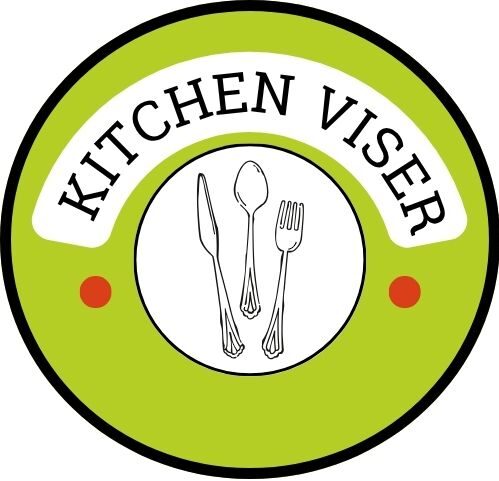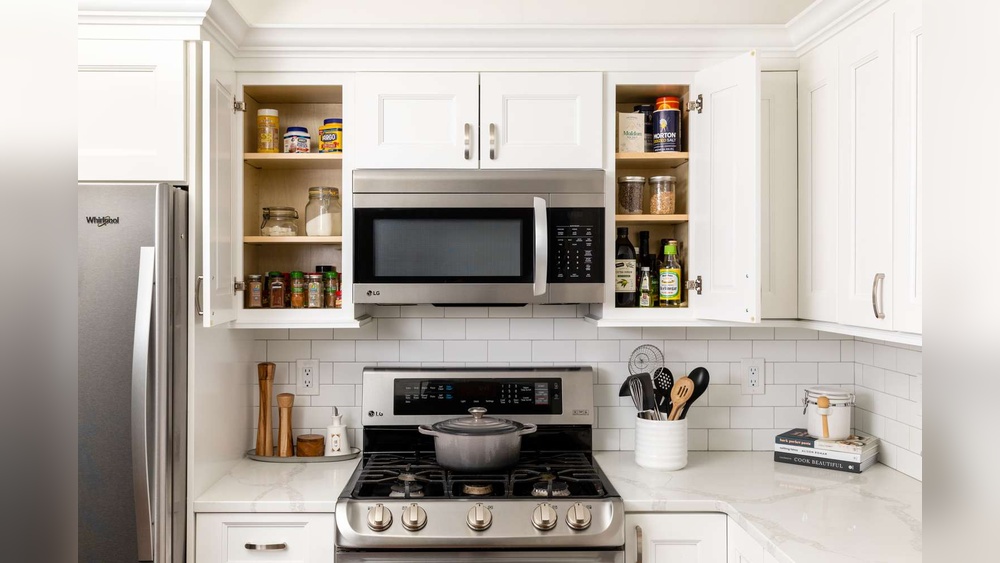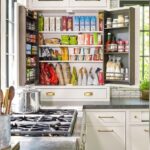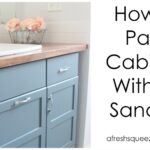Are your kitchen cabinets a constant source of frustration? Imagine opening a door and instantly finding exactly what you need—no more digging through clutter or stacking items in a way that makes you cringe.
Organizing your kitchen cabinets isn’t just about tidiness; it’s about making your daily cooking and cleaning routines smoother and more enjoyable. You’ll discover simple, practical steps to transform your cabinets into a well-ordered space that saves you time and stress.
Ready to take control of your kitchen and make it work for you? Let’s dive in and unlock the secrets to perfect cabinet organization.
Create Kitchen Zones
Place pots, pans, and cooking tools close to the stove. This makes cooking easier and faster. Keep lids and spatulas in the same area. Use hooks or drawers for utensils to save space.
Near the sink, store plates, bowls, and cups. This zone helps with cleaning and unloading the dishwasher. Keep dish soap and sponges nearby for quick access.
Set up the food prep zone on the counter with cutting boards, knives, and mixing bowls. Keep plastic wrap and baggies within reach. This makes meal prep smooth and quick.
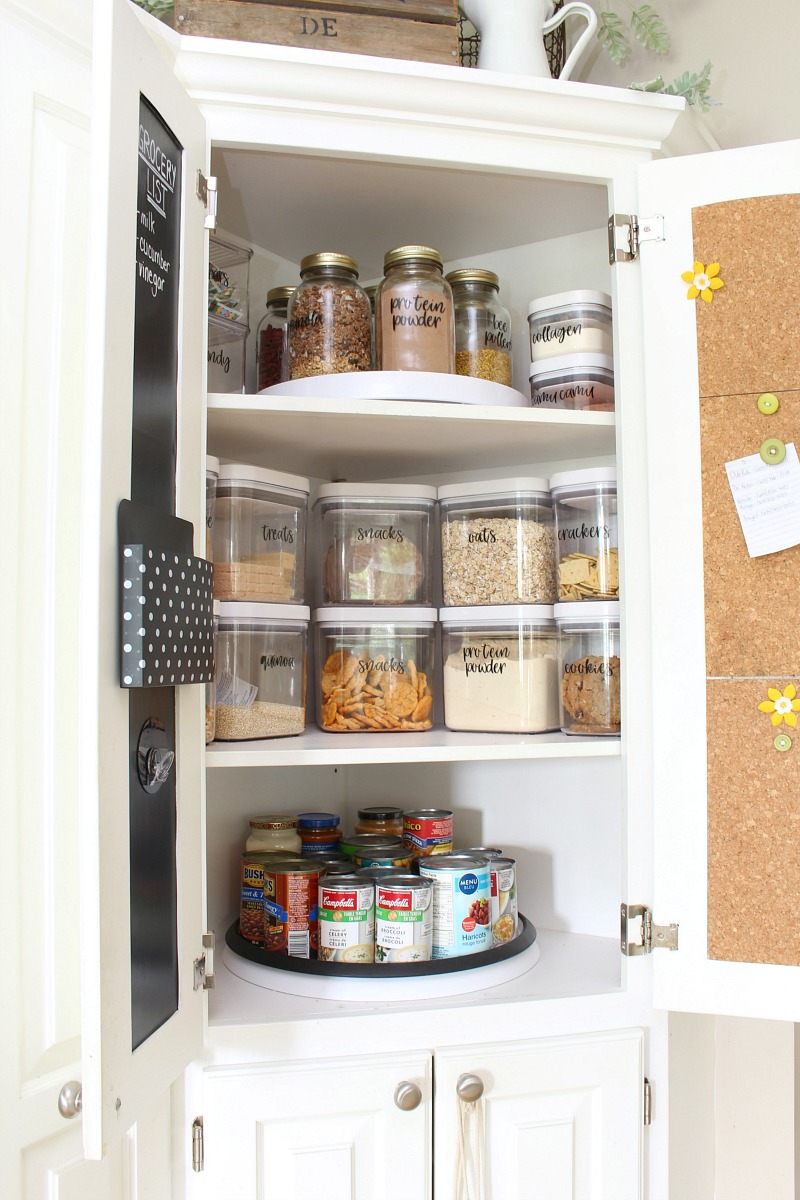
Sort By Frequency
Daily use items like plates, cups, and utensils should be stored up front. This keeps them easy to reach every day. Place these items at eye level or lower shelves for quick access.
Items used less often can go on higher shelves. These include special dishes or seasonal kitchen tools. Storing them up high saves space for daily items below.
Organizing by how often you use things helps the kitchen stay neat. It also makes cooking and cleaning faster. Keep the most used items within easy reach and others tucked away but still visible.
Arrange By Item Type
Heavy items like pots, pans, and large appliances fit best in lower cabinets. This keeps them easy to lift and reduces strain. Lower shelves are perfect for bulky cookware and mixing bowls. Light items such as spices, glasses, and canned goods belong in upper cabinets. These are easier to reach and keep your kitchen looking tidy.
Place frequently used appliances, like a toaster or blender, where you can grab them fast. Store less-used appliances in lower or deeper cabinets to save space. Keep items near where you use them most—for example, pots near the stove and plates near the dishwasher. This simple method saves time and keeps your kitchen organized.
Use Vertical Storage
Shelf risers help create extra layers inside cabinets. They let you store more items without stacking them messily. Use risers to keep plates, cups, or small bowls neat and easy to reach.
Vertical dividers are perfect for pans and baking sheets. Stand them upright between dividers to save space and find what you need quickly. This method stops pans from piling on top of each other.
Cabinet doors offer hidden storage options. Attach racks or small baskets to hold cutting boards, lids, or spices. This frees up shelf space and keeps small items organized.
Declutter Before Organizing
Start by removing all unused items from your kitchen cabinets. This helps create more space and makes organizing easier. Check expiry dates and toss expired food. Donate items that you do not use but are still in good condition.
Next, group like items together. Put all baking supplies in one spot. Keep pots and pans in another. Store plates and glasses near the dishwasher for easy access.
Sorting items into groups saves time and keeps your kitchen neat. It also helps you find what you need quickly.
Utilize Containers And Labels
Clear containers help you see what is inside quickly. They keep your kitchen neat and items fresh. Use containers for dry goods like pasta, rice, and snacks. This way, you can easily spot what you need without opening many packages.
Labels make finding items fast and simple. Write the name of the food or item on each container. Use big, clear letters so everyone can read them. Labels also help to put things back in the right place after use.
Combining clear containers and labels reduces clutter. It saves time and keeps your kitchen organized. This method works well for all kinds of kitchen items, from spices to baking ingredients.
Stack Items Strategically
Stack identical items such as plates, bowls, or canned goods to save space. Keep stacks neat and stable to avoid accidents. Grouping similar items together makes it easier to find what you need quickly.
Arrange different items by size, placing taller items at the back and shorter ones in front. Store large pots or pans on lower shelves and smaller containers on higher shelves. This method helps use space wisely and keeps the cabinet organized.
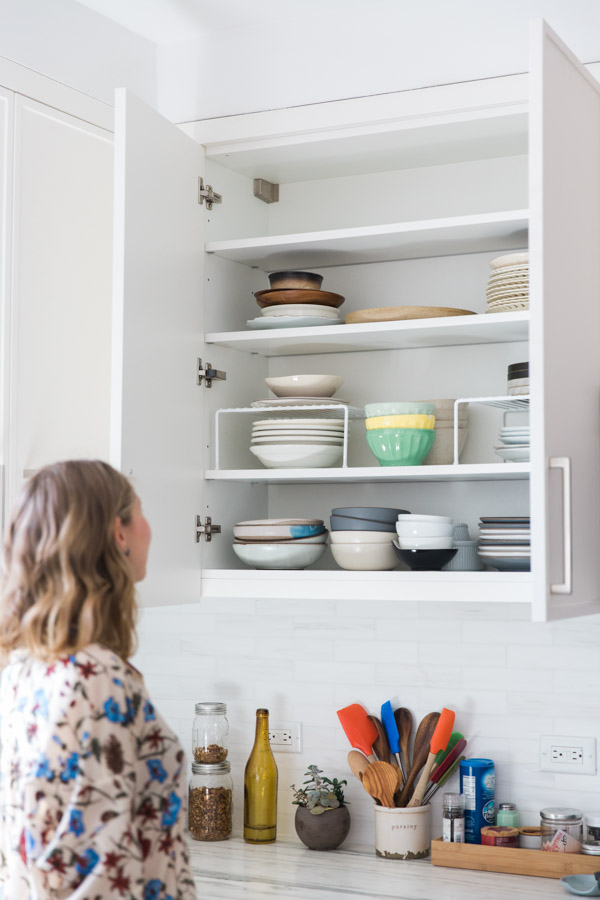
:strip_icc()/kitchen-pantry-snacks-c2bb5c24-7b13dec53fc446c8ad1ae36763639f30.jpg)
Frequently Asked Questions
How Do You Decide Where To Put Things In Kitchen Cabinets?
Organize kitchen cabinets by task zones: store pots near the stove, plates by the dishwasher, and prep tools near counters. Keep daily items accessible and heavy or rarely used items in lower cabinets. Group similar items together and use containers or organizers to maximize space efficiently.
How Are Kitchen Cabinets Supposed To Be Organized?
Organize kitchen cabinets by creating zones for cooking, cleaning, and food prep. Store frequently used items within easy reach. Group similar items together and place heavy or rarely used items in lower or higher cabinets. Use vertical storage and cabinet door space to maximize efficiency.
What Kitchen Cabinet Color Is Outdated?
Outdated kitchen cabinet colors include dark brown, avocado green, mustard yellow, and bright orange. These shades often look old-fashioned. Neutral tones like white, gray, or soft pastels remain popular and fresh. Choosing timeless colors boosts your kitchen’s appeal and value.
How Do I Organize My Kitchen Like A Pro?
Organize your kitchen by creating zones for cooking, cleaning, and food prep. Store frequently used items within reach. Group similar items together and declutter regularly. Use vertical storage and cabinet door racks to maximize space. Place heavy items in lower cabinets and daily-use items in front.
Conclusion
Organizing your kitchen cabinets makes cooking easier and faster. Keep items you use often within easy reach. Group similar things together to save time. Use lower cabinets for heavy or rarely used items. Make zones for cooking, cleaning, and food prep.
Add shelves or racks to increase space. Small steps can create a neat, functional kitchen. Enjoy cooking in a well-organized space every day.

Yes, working as , Food Blogger and Product Reviewer for last 6 years. Here you will get amazing deals for Smart kitchen products. I am your best source for the latest update in cooking trends. I provide insightful articles, reviews, and analysis on cutting-edge kitchen gadget. My mission is to empower readers with the knowledge they need to stay ahead in a rapidly evolving coking world. Join me as we explore the future of food technology and how it shapes our lives today and tomorrow.
